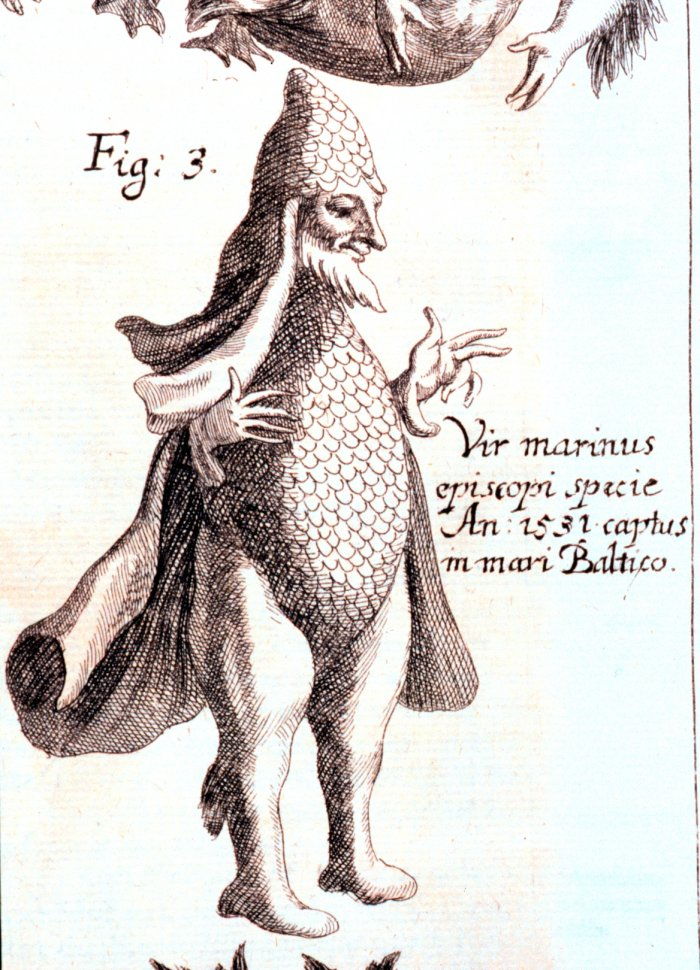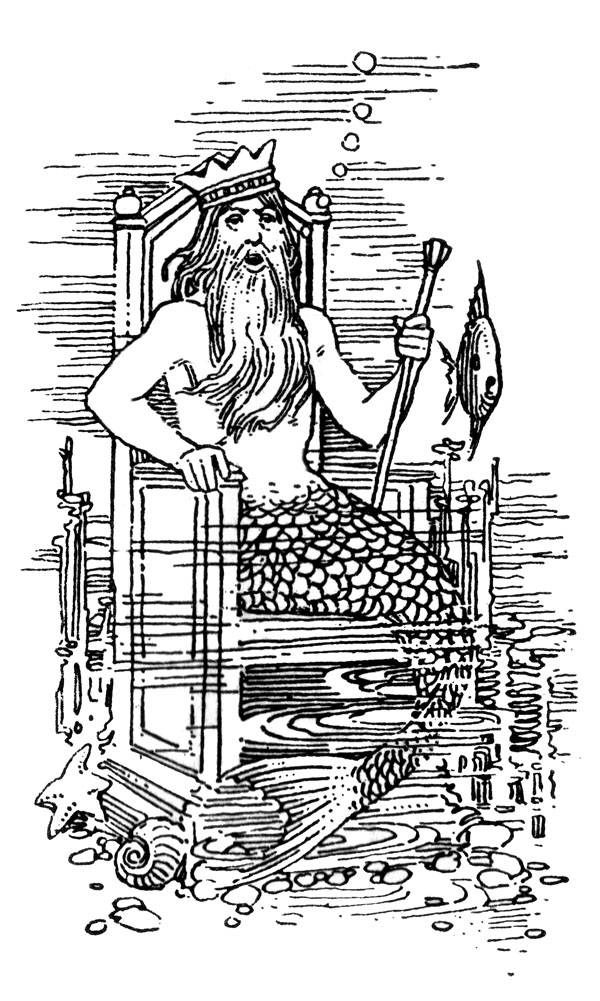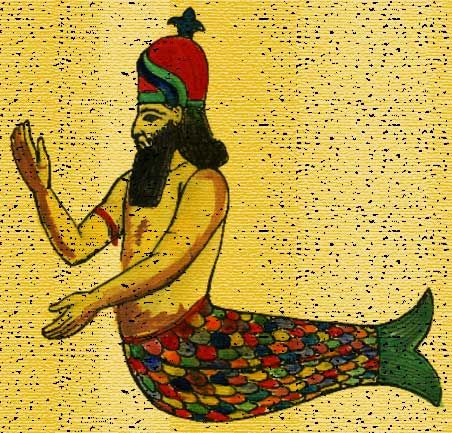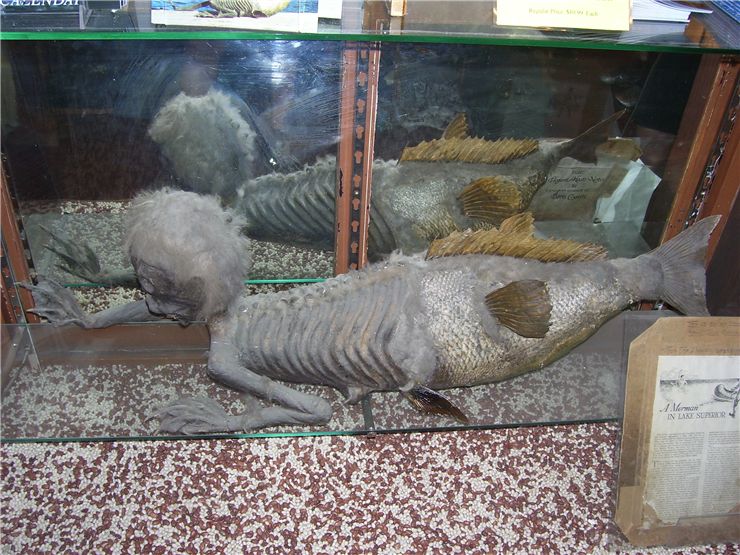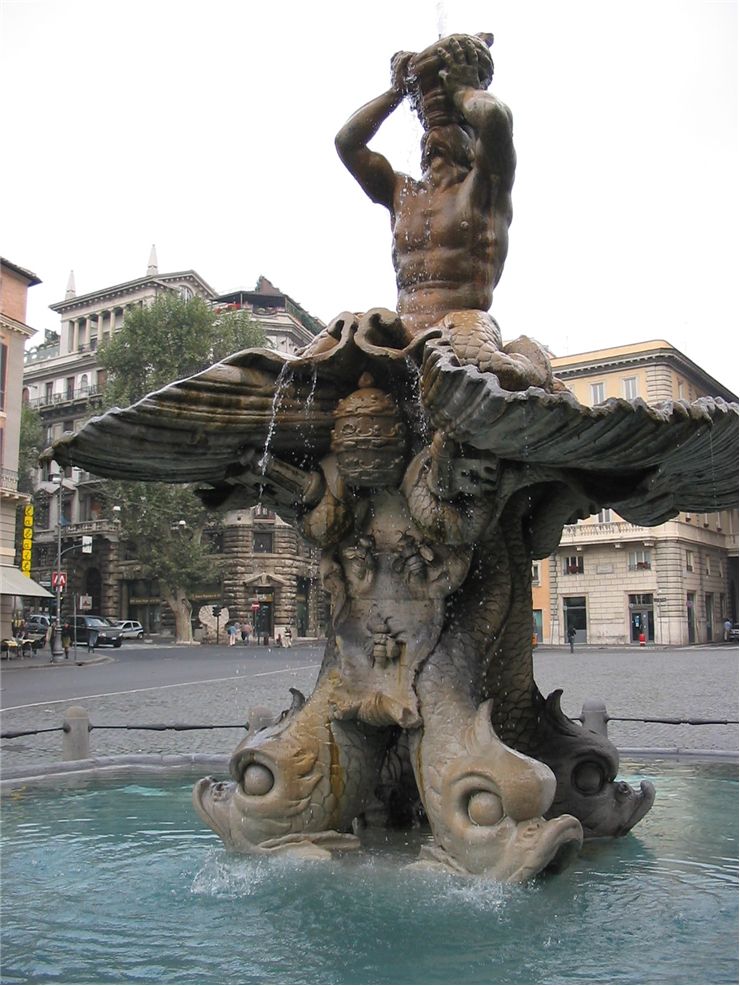Merman - Mermen in Mermaids Mythology
Through the history of human mythology and religion, mermaids received much attention, but their male counterparts were much less showcased. While mermaids represented beauty and romance that the predominately male ship crews longed-for on the long journeys, mermen remained left behind in the folklore, usually shown only as children made in a union of a man and mermaid.
In their appearance, mermen do not differ much from mermaids. They are mythical creatures who have a form of an upper human torso, and a lower half of a fish tail. Originally celebrated as the deities, mermen slowly slipped back into the legends as the ordinary mythological creatures of the sea, who very rarely show up on the surface. The reason of that was sometimes because of their shyness and sometimes because their ugliness.
The best-known deities that had the form of mermen were Babylonian Oannes, Ea (also known as Enki in Sumerian mythology) and Dagon (sea god of fertility). However, the most famous mermen God was celebrated in Greece. Triton, son of Poseidon and Amphitrite, was regularly depicted on stone walls and pottery as strikingly handsome mermen with a fish tail. He often carried a trident and a twisted conch shell (which he used to control the sea and calm or raise storms) and was believed to have the power to multiply himself into a host of smaller sea spirit demons called Triones. Indian Hindu religion also celebrates mermen, as they are thought to be the first incarnation of their supreme deity Vishnu (the only difference to the modern mermen is the presence of two sets of arms, each holding one artifact - conch shell, wheel, Lotus, and Mace).
Around the world, many cultures have their myths and folklore tales about mermen. Here are some of the most notable ones:
- The region of Amazon River is a home of a myth of boto -fresh water mermen who is responsible for seducing and impregnating many women while being transformed into full human form.
- Finnish mythology is portraying mermen as powerful and handsome creatures that wield magic and have the ability to cure illnesses, lift curses and brew potions. They are most often depicted with a beard made from seaweeds, and are sometimes capable of causing much destruction if they come to close to human civilization.
- Glaucus was a man from Greek mythology who one day found a grass with magical properties. After he ate it, he quickly transformed into mermen, who was latter elevated by the gods into one of the Greeks many sea spirits.
With the rise of the modern view of mermaids that started with the appearance of the Hans Christian Andersen's fairytale "The Little Mermaid", mermen revived an increased attention in the minds of the public. During the last few decades, mermen became part of many fantasy settings as one of the most common dwellers of the sea, and with each passing year, their appeal grows more and more. Some of the most famous examples of mermen in modern culture can be found in the Disney's "The LittleMermade" franchise of cartoons, DC Comics mythology, and one of the main villains from the popular "He-Man and the Masters of the Universe" cartoon in the 1980s.
